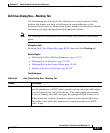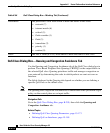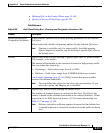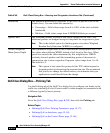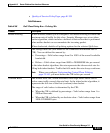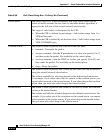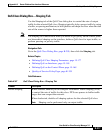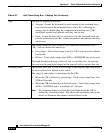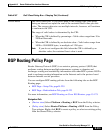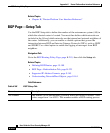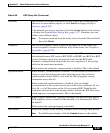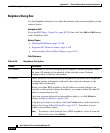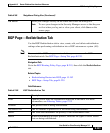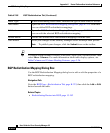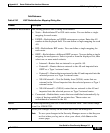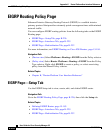
K-219
User Guide for Cisco Security Manager 3.2
OL-16066-01
Appendix K Router Platform User Interface Reference
BGP Routing Policy Page
BGP Routing Policy Page
Border Gateway Protocol (BGP) is an exterior gateway protocol (EGP) that
performs routing between multiple autonomous systems or domains and
exchanges routing and reachability information with other BGP systems. BGP is
used to exchange routing information on the Internet and is the protocol used
between Internet service providers.
You can configure BGP routing policies from the following tabs on the BGP
Routing page:
• BGP Page—Setup Tab, page K-220
• BGP Page—Redistribution Tab, page K-223
For more information, see BGP Routing on Cisco IOS Routers, page 15-179.
Navigation Path
• (Device view) Select Platform > Routing > BGP from the Policy selector.
• (Policy view) Select Router Platform > Routing > BGP from the Policy
Type selector. Right-click BGP to create a policy, or select an existing policy
from the Shared Policy selector.
Excess Burst The excess burst size. If you select peak as the shaping type, data bursts
during an interval can equal the sum of the sustained burst value plus this
value. The average data rate over multiple intervals, however, will continue
to conform to the CIR.
The range of valid values is determined by the CIR:
• When the CIR is defined by percentage—Valid values range from 10 to
2000 milliseconds.
• When the CIR is defined by an absolute value—Valid values range from
1000 to 154400000 bytes, in multiples of 128 bytes.
Note If you do not configure this field when the CIR is defined by an
absolute value, the sustained burst value is used.
Table K-97 QoS Class Dialog Box—Shaping Tab (Continued)



